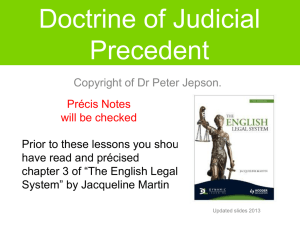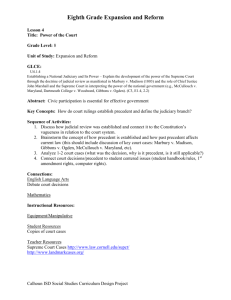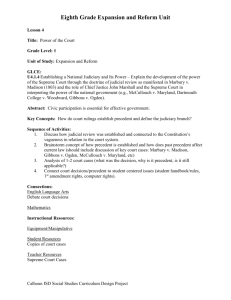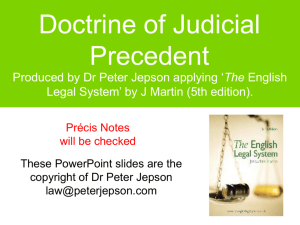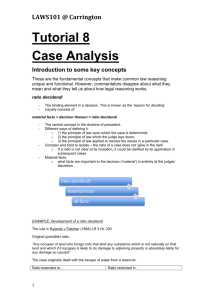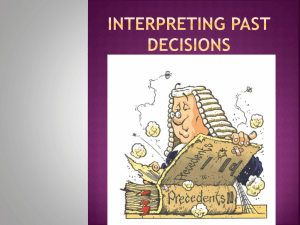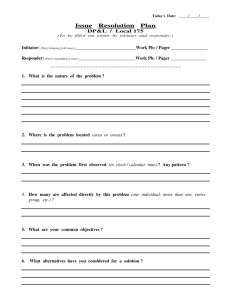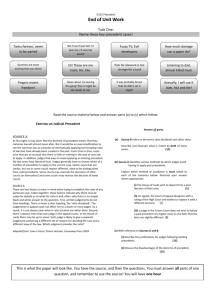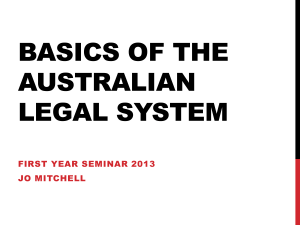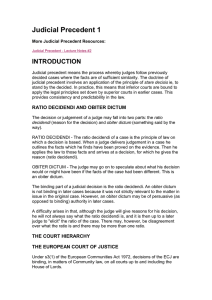Judicial Precedent
advertisement
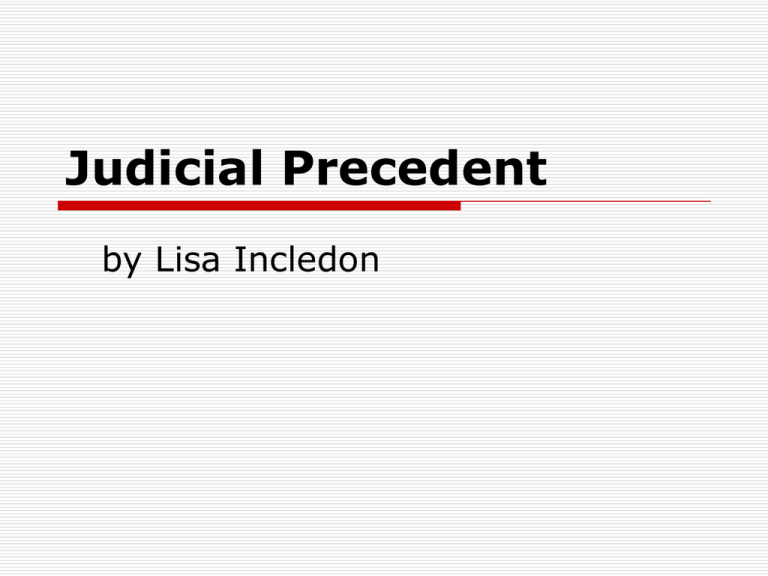
Judicial Precedent by Lisa Incledon Common Law Common law is based on previously decided cases. It is law created by judges for future judges to follow. Thus, decided cases are sources of law. Doctrine of Judicial Precedent Following of legal principles laid down in previously decided cases. Based upon the principle of stare decisis. What does this mean? Doctrine of stare decisis ‘Stand by what has been decided and do not unsettle the established’ This means standing by and following previous decisions. Why is this important? Ratio Decidendi Literally means ‘reasons for the decision’ Explanation of the principles of law upon which the decision is based It is the ‘ratio decidendi’ which becomes the precedent that can bind future cases. Obiter Dicta ‘Things said in passing’ or ‘Other things said’ Obiter dicta is not part of the ratio decidendi and is not binding. It can be difficult when reading a case to work out what is ratio decidendi and what is obiter dicta. Reading Case Law Also remember there may be more than one judge: How many in the Court if Appeal? How many in the Supreme Court? When reading judges may disagree. You need to work out Majority judges Legal principles they agree on Case Reporting It is essential that cases – particularly those in the Supreme Court and Court of Appeal are accurately reported. Supreme Court cases can be found on the Supreme Court website: http://www.supremecourt.gov.uk/decidedcases/index.html Cases from many of the higher courts can also be found on http://www.bailii.org/ Original Precedent The first decision on a new point of law that has never been decided before. This then forms a new precedent for future cases to follow. Binding Precedent A binding precedent is one which must be followed – the court faced with it has no alternative. Importance of Court hierarchy The Court hierarchy is essential for the doctrine of judicial precedent. Lower courts are bound by the decisions of higher court. What does this mean? Powers of the Courts As a general rule – which courts are each of these bound by? Magistrates’ Court Crown Court County Court High Court Divisional Courts Court of Appeal Supreme Court Supreme Court Supreme Court was previously the House of Lords. It was bound by itself for many years London Street Tramways v London County Council (1898) Issued the Practice Statement in 1966 Practice Statement What does it say? What does it mean? Write down 2 criminal and 2 civil cases in which the House of Lords/Supreme Court has made use of the Practice Statement. Court of Appeal When can the Court of Appeal depart from its own previous (and otherwise binding decisions)? What case provides these rules? Exceptions There are three key ways in which a court may avoid following a precedent Distinguishing Overruling Reversing Persuasive Precedent Persuasive precedent is not binding. A court does not have to follow a persuasive precedent but may consider it and be persuaded to follow it. What are the six sources of persuasive precedent?
